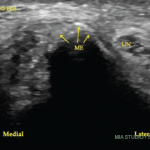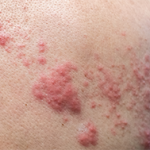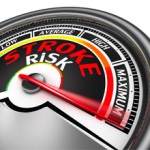Objective & Methods: Herpes zoster (HZ) infection, also known as shingles, is caused by reactivation of latent varicella-zoster virus infection generally acquired decades earlier. HZ has been variably considered an opportunistic infection: while it clearly occurs in “normal” hosts, it is readily understood that diminished cell-mediated immunity leads to zoster. Although more than half of the individuals developing zoster are over the age of 60 years, patients with autoimmune disease and particularly those receiving immunosuppressive therapy are at 1.5–2 times the risk of developing HZ as healthy adult controls. In immunocompromised hosts, more severe complications can be observed, including vasculopathy, myelitis, motor nerve involvement, cranial nerve palsies and ocular involvement.
The literature has suggested that the risk of stroke may increase shortly after herpes zoster, but little is known about this association in patients with autoimmune diseases, who are at increased risk of both zoster and stroke. This study was designed to test the hypothesis that the incidence of stroke immediately following HZ infection is increased in patients with autoimmune diseases compared with the incidence of stroke at later time points.
Medicare data from Jan. 1, 2006, through Dec. 31, 2013, were used to identify patients with autoimmune diseases. The outcome of interest was hospitalized stroke. Secondary analyses included assessment of the impact of antiviral therapy on subsequent stroke, as well as the influence of varicella-zoster virus–related complications on stroke incidence.
Results: The authors identified 267,906 patients with inflammatory diseases who developed HZ. The following patients were excluded: those without at least 12 months of enrollment before the first zoster diagnosis, those who used antiviral medication within 12 months before the index date, those who did not meet the study criteria requirement for an autoimmune inflammatory disease and those with a diagnosis of stroke prior to the index date. The final cohort consisted of 43,527 patients. Among these individuals, 3,080 had zoster with cranial nerve complication, 4,494 had zoster with other complication, and 35,953 had zoster without complication.
The crude incidence of stroke ranged from a high of 2.30 per 100 patient-years (95% confidence interval [95% CI] 0.96–5.52) within 90 days of HZ in patients who had HZ-related cranial nerve complications and did not receive treatment to a low of 0.87 per 100 patient-years (95% CI 0.75–1.02) at 366–730 days in those without complication who received antiviral treatment. After multivariable adjustment for multiple stroke-related factors, the overall incidence rate ratio (IRR) for stroke in the first 90 days after HZ was 1.36 per 100 patient-years (95% CI 1.10–1.68) compared with stroke occurring >1 year after HZ. The risk was greater for patients with zoster and cranial nerve complications (IRR 2.08 per 100 patient-years [95% CI 0.99–4.36]).



